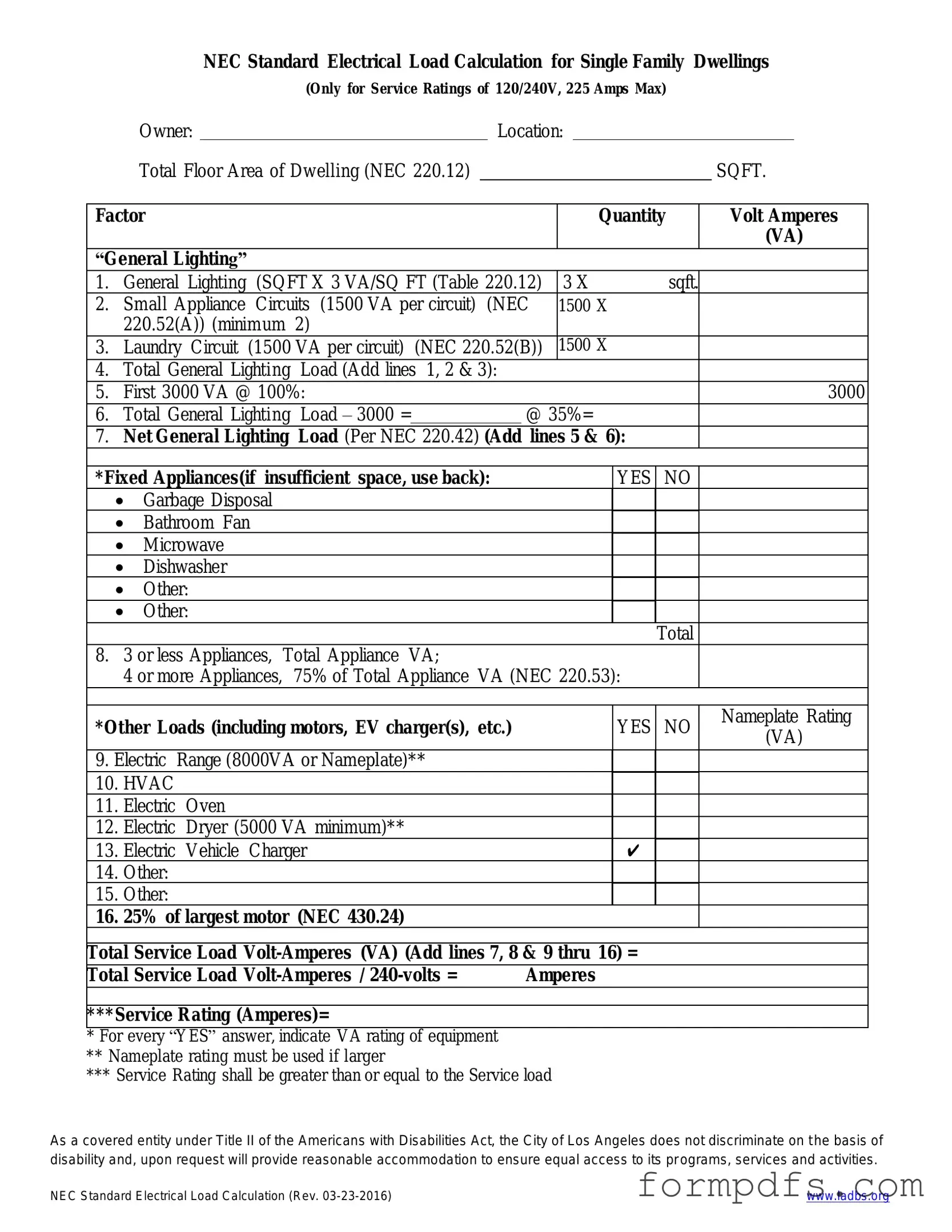What is the LADBS NEC Standard Electrical Load Calculation form?
The LADBS NEC Standard Electrical Load Calculation form is a document used to determine the electrical load requirements for residential and commercial buildings. This form helps ensure that electrical systems are designed to handle the expected load safely and efficiently, in compliance with the National Electrical Code (NEC) standards.
Who needs to complete this form?
This form is typically required for contractors, electricians, and property owners who are planning new electrical installations or modifications to existing systems. It is essential for anyone seeking to obtain permits for electrical work in Los Angeles.
What information is needed to fill out the form?
To complete the form, you will need to provide details about the building, including its square footage, the number of rooms, and the types of appliances and systems that will be used. This includes lighting, heating, cooling, and any specialized equipment. Accurate information is crucial for an effective load calculation.
How is the electrical load calculated?
The electrical load is calculated based on the total wattage of all devices that will be used in the building. The form includes specific guidelines and formulas to help you determine the load. Factors such as demand factors and diversity factors are also considered to ensure a safe and efficient calculation.
Is there a fee associated with submitting the form?
Yes, there may be a fee associated with the submission of the LADBS NEC Standard Electrical Load Calculation form. This fee can vary depending on the scope of the project and the type of permit required. It is advisable to check the latest fee schedule on the LADBS website or contact their office for specific information.
Where can I obtain the form?
The form can be obtained from the Los Angeles Department of Building and Safety (LADBS) website. It is available for download in PDF format, making it easy to print and complete. You can also visit a local LADBS office to pick up a physical copy if needed.
What happens after I submit the form?
Once you submit the form, it will be reviewed by LADBS staff. They will verify the calculations and ensure compliance with NEC standards. If everything is in order, you will receive approval for your electrical work permit. If there are any issues, you will be notified and given the opportunity to make corrections.
Can I submit the form electronically?
Yes, LADBS allows for electronic submissions of the NEC Standard Electrical Load Calculation form. You can submit it through their online portal, which streamlines the process and can help reduce processing times. Make sure to follow the instructions provided on the website for electronic submissions.
